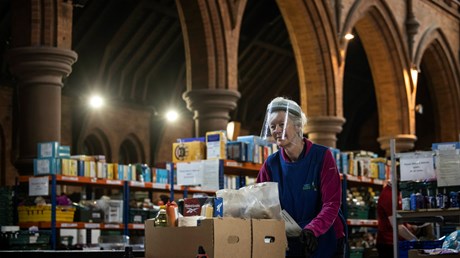Report: How smaller congregations are still showing up to support their communities through growing social action.

There are two pictures I could offer you of the role and significance of the Church of England in contemporary British society. The first is one of growing secularization and declining church attendance. The second is one where the church is the beating heart of the nation’s socioeconomic infrastructure, with an ever-increasing contribution of food banks, homeless shelters, and a range of community support.
Paradoxical though it may seem, both these pictures are recognizable reflections of the national church in Britain in 2020.
The evidence for secularization, or at least for the declining importance of Christianity, is compelling. Christian affiliation in the UK fell from 66 percent to 38 percent over 25 years, with Anglicanism accounting for the sharpest decline in affiliation. By 2018, only 12 percent of the national population identified as belonging to the Church of England or its sister churches in Scotland and Wales.
Any residual cultural affiliation to the Church of England appears to be in freefall and is likely to accelerate; surveys show as few as 1 percent of 18- to 24-year-olds now identify as Anglican. Likewise, attendance at Church of England services has fallen significantly in recent decades, down to an average weekly attendance of 57 people (compared to a mean of 81 in the Episcopal Church in the US, which has also suffered decline).
Looking at the data, we might question the validity of a national church that attracts less than 2 percent of the national population to regular worship. Indeed, this might even be taken as fuel to fire the debate about the established nature of the Church of England. But what of the second picture?
The material and social conditions of the UK have seemed especially urgent ...
from Christianity Today Magazine
via

.gif)

.gif)

.gif)
.gif)
